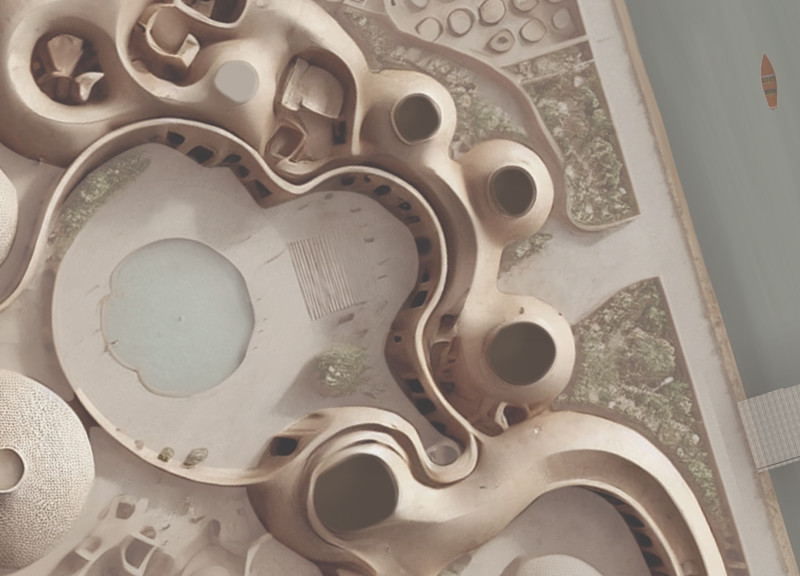5 key facts about this project
The primary design concept hinges on openness and transparency, which is articulated through the extensive use of glass facades. This choice not only allows for abundant natural light to permeate the interiors but also encourages a visual connection between the indoor environment and the bustling outdoor life. The transparent surfaces invite passersby to engage with the space, blurring the lines between public and private functions. This interaction is further enhanced by the strategic placement of communal areas that encourage collaboration and social interaction, thereby enhancing the community's involvement.
One of the notable aspects of the project is its careful consideration of materiality. The architects have selected materials that are not only aesthetically pleasing but also functional and sustainable. The use of concrete as the primary structural material provides the requisite durability while allowing for creative formwork. Wood accents, strategically placed throughout the space, add warmth and texture, creating a welcoming atmosphere. Additionally, the incorporation of steel elements contributes to the overall structural integrity, offering both visual interest and support.
The spatial arrangement within the architecture has been meticulously crafted to optimize flow and usability. From expansive open areas designed for gatherings to quieter alcoves that offer moments of reflection, every space is thoughtfully arranged to meet varying needs. This layout promotes accessibility, ensuring that individuals of all abilities can enjoy the full range of features the architecture has to offer.
A unique design approach is evident in the incorporation of sustainable technologies, which align with contemporary environmental considerations. Features such as green roofs and energy-efficient systems have been thoughtfully integrated into the design to reduce the building’s ecological footprint. This not only set a precedent for future projects in the region but also serves as an educational opportunity for visitors, showcasing the importance of responsible architecture.
The project exhibits a strong connection to its geographical location, taking cues from the local climate and cultural heritage. The architectural design intricately responds to environmental factors, utilizing passive solar strategies that aid in temperature regulation. This sensitivity to the surroundings fosters a harmonious relationship between the built environment and nature, enriching the overall user experience.
Furthermore, the architecture emphasizes local culture through art integrated into the design. Murals and installations created by local artists celebrate the community’s history, creating a sense of ownership and pride among residents. These elements transform the architecture into more than just a building; it becomes a canvas reflecting the identity of the community it serves.
For those seeking a deeper understanding of this architectural project, exploring the architectural plans, sections, designs, and ideas through detailed presentations will provide invaluable insights. The careful execution of this project stands as a testament to the architects' commitment to marrying aesthetic appeal with functional integrity. By investigating the intricacies of this design, readers can appreciate the thoughtful decisions that went into creating a vibrant space that serves the community well.























